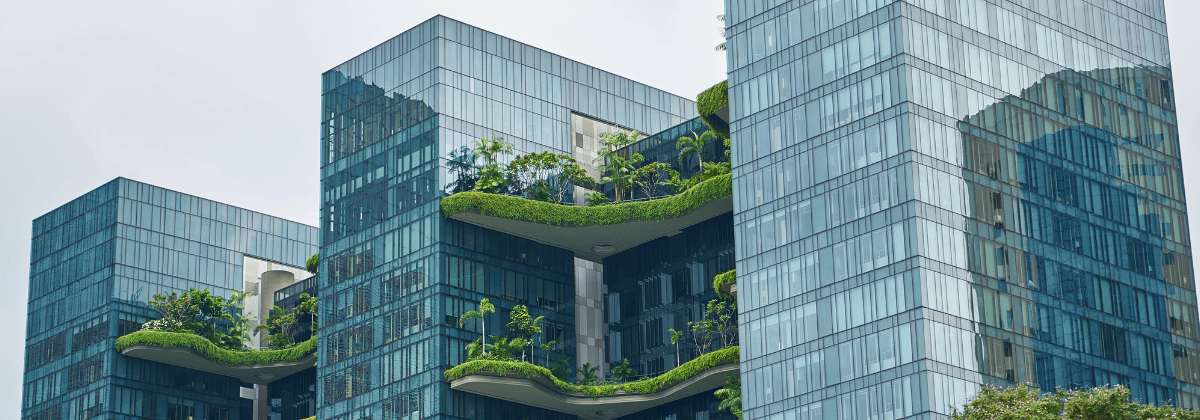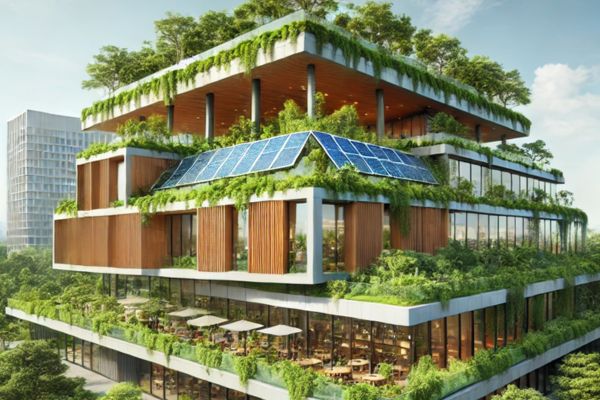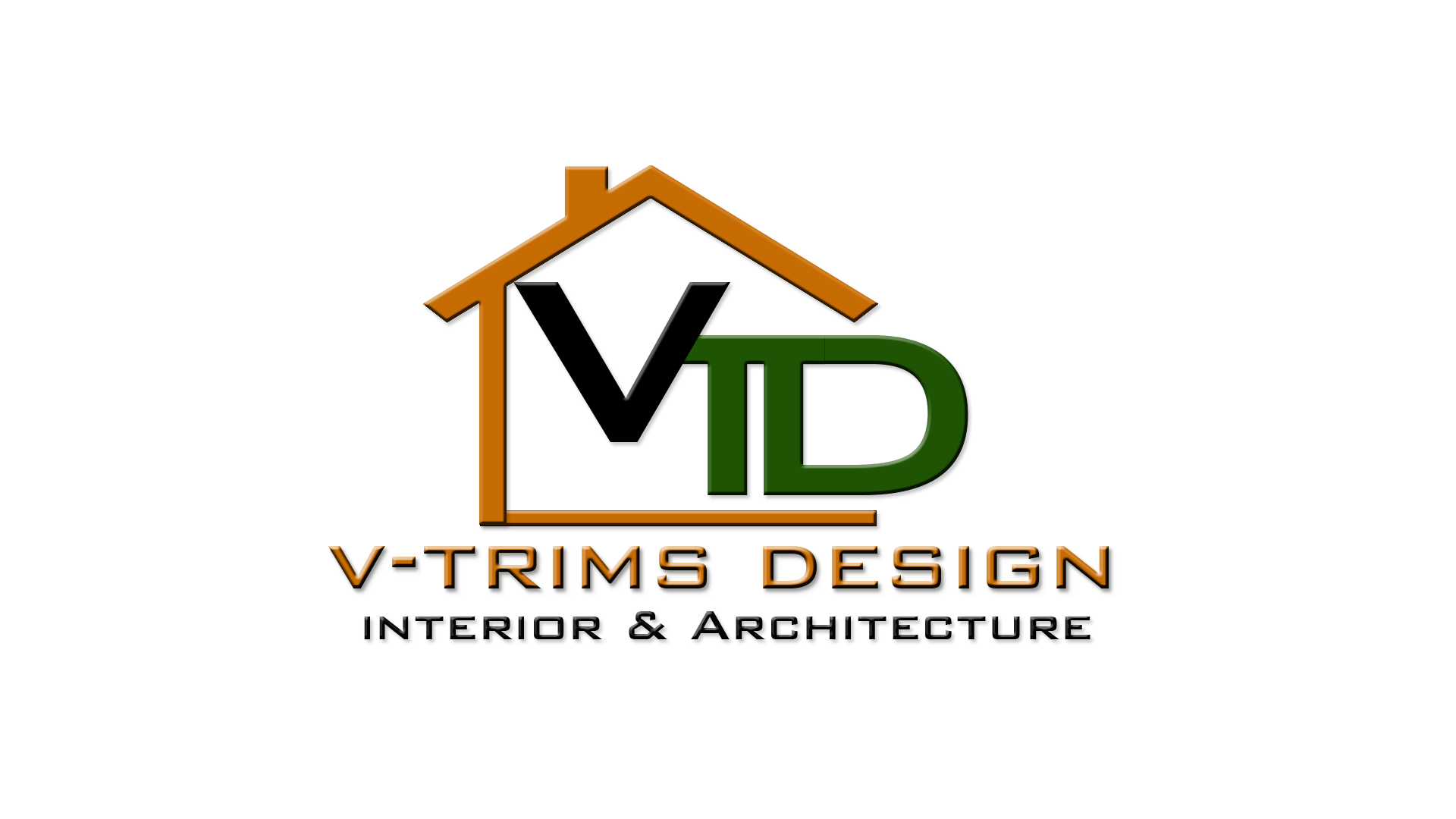NIKHIL GAMING.
2 months ago

The world is at a tipping point. Climate change is no longer a distant threat—it’s an urgent crisis. Rising temperatures, extreme weather patterns, and resource depletion have made it clear that we must change the way we build and inhabit our spaces. One powerful solution? Sustainable architecture.
Sustainable architecture isn’t just about designing energy-efficient buildings; it’s about reshaping how we interact with our environment. From eco-friendly materials to passive design techniques, the right architectural choices can reduce carbon footprints, lower energy consumption, and foster a healthier planet.

Traditional construction methods have long relied on materials and practices that contribute significantly to environmental degradation. From high carbon emissions to resource depletion, conventional building techniques have a lasting impact on the planet.
Concrete, steel, and brick are some of the most commonly used materials in traditional construction. The production of cement alone accounts for nearly 8% of global CO2 emissions. The energy-intensive manufacturing and transportation of these materials significantly contribute to climate change.
The demand for timber and other natural resources leads to deforestation, which reduces carbon sequestration, disrupts ecosystems, and accelerates biodiversity loss. Clearing land for construction also destroys habitats for countless species.
Construction and demolition waste account for a large portion of landfill materials worldwide. Many traditional buildings are not designed with deconstruction or recycling in mind, leading to massive amounts of waste that take decades or even centuries to break down.
By recognizing these impacts, it becomes even clearer why sustainable architecture is not just an option but a necessity for the future of our planet.
The materials we choose for construction play a major role in determining a building’s environmental impact. Traditional construction materials like concrete and steel contribute significantly to greenhouse gas emissions. Fortunately, sustainable alternatives are making their way into modern architecture.
Bamboo is a fast-growing, renewable resource that absorbs more carbon dioxide than trees. It is lightweight, durable, and incredibly versatile. Used in flooring, walls, and structural elements, bamboo reduces reliance on energy-intensive materials.
Architects are now using recycled steel, reclaimed wood, and repurposed plastics to construct buildings with a smaller carbon footprint. By repurposing existing materials, we can minimize landfill waste and reduce the energy required for new production.
Hempcrete, made from hemp fibers, water, and lime, acts as a natural insulator and is carbon-negative, meaning it absorbs more CO2 than it emits. It’s lightweight, mold-resistant, and biodegradable, making it an excellent sustainable option.
By choosing these eco-friendly materials, architects and builders can significantly reduce the environmental impact of construction while creating aesthetically stunning structures.

Imagine a city where rooftops aren’t just wasted spaces but thriving ecosystems. Green roofs are a game-changer in sustainable architecture, helping to combat climate change while beautifying urban landscapes.
Green roofs consist of vegetation layers planted over a waterproofing system. They provide insulation, absorb rainwater, and create natural habitats for birds and insects. More importantly, they combat the urban heat island effect—a phenomenon where cities become significantly warmer due to concrete and asphalt absorbing heat.
Leading cities worldwide are encouraging green roofs through incentives and regulations. By integrating them into sustainable architecture, we can create greener, more livable urban spaces.
One of the most effective ways to build sustainably is through passive design techniques. Instead of relying on mechanical heating and cooling systems, passive design utilizes the natural environment to regulate indoor temperatures, saving energy and reducing greenhouse gas emissions.
The way a building is positioned affects how much sunlight and wind it receives. South-facing windows in colder climates maximize solar gain, while buildings in warmer regions are designed to minimize direct sun exposure.
Materials like concrete, brick, and stone can absorb and store heat during the day and release it at night, naturally stabilizing indoor temperatures.
By designing buildings to promote cross-ventilation—allowing fresh air to flow freely—architects can significantly reduce the need for air conditioning. Courtyards, high ceilings, and strategically placed windows help achieve this.
Simple solutions like overhangs, pergolas, and tree planting can provide natural shading and reduce reliance on artificial cooling. Additionally, high-quality insulation ensures that buildings retain heat in the winter and stay cool in the summer.
Passive design techniques make buildings more energy-efficient, comfortable, and environmentally friendly—without adding extra costs or complexity.
Sustainable architecture isn’t a trend; it’s a necessity. As global temperatures continue to rise, the choices we make in construction and design will determine the health of our planet. Architects, designers, and homeowners must embrace eco-friendly building materials, green roofs, and passive design techniques to create structures that harmonize with nature rather than work against it.
At V-Trims Design, we are passionate about crafting sustainable, innovative spaces that leave a lasting positive impact. Whether you’re building a home, office, or community space, we can help you integrate green solutions into your design. Contact the best architecture firm in Lucknow today for a consultation and bring your dream space to life.
5 months ago
VTRIM Design isn’t just designing buildings — they’re designing experiences, stories, and lifestyles. Highly recommended for anyone who values quality, aesthetics, and integrity in architecture.
6 months ago
Gajab ke designer h mera ghar bnaya h jabse roz dekh ke unhi ko yad krta hu kya bnaya h.
6 months ago
Best architecture firm in Lucknow. Exceptionally good in terms of designing and service standards. Professionalism and dedication towards each project is outstanding. I Wish them great success in future. Highly recommended go for v-Trims design
6 months ago
VTRIM Design isn’t just designing buildings — they’re designing experiences, stories, and lifestyles. Highly recommended for anyone who values quality, aesthetics, and integrity in architecture.
6 months ago
Best interior designer in lucknow and best creativity work in interior design
6 months ago
I'm painter and i have been working for long time with v-trims design . This fir is done many attractive projects
6 months ago
"VTRIMS Design truly listens to your needs and offers creative solutions. Their team is very responsive and skilled. Highly professional."
6 months ago
Excellent company.The team is young,talented,and very passionate about design
6 months ago
"If you're looking for modern and elegant interiors, VTRIMS Design is the go-to place. Loved their approach, especially the 3D visuals before execution."
6 months ago
⭐⭐⭐⭐⭐ "From concept to completion, everything was handled with perfection. The team is young, talented, and very passionate about design."
6 months ago
⭐⭐⭐⭐⭐ "Loved working with them! My kitchen and dining space look like something out of a magazine. Superb craftsmanship."
6 months ago
It's nice company work is very fast trustable company Clint always happy interior design so attractive and amazing team all good❤️❤️
6 months ago
⭐⭐⭐⭐⭐ "Very professional team! They handled my 3BHK interior project beautifully. Timely delivery and unique designs. Thank you VTRIMS Design."
6 months ago
"Very professional team! They handled my 3BHK interior project beautifully. Timely delivery and unique designs. Thank you VTRIMS Design."
6 months ago
"Brilliant design, smooth execution and a truly professional team. They turned our vision into a beautiful, functional space we know call home . Highly recommended! "
6 months ago
V Trims is a firm with young and dynamic Architects who are very innovative in designing. They make very good looking contemporary structures with clean finish
6 months ago
Exceptional creativity and execution! The design team perfectly understood our vision and brought it to life with style and functionality. Professional, detail-oriented, and truly passionate about their work. Highly recommended for anyone looking to elevate their space!
6 months ago
They are doing very well construction finishing as welll best wishes for future endeavours
6 months ago
it's too good . There way of talking there designs everything is totally wonderful you all will like their presentation
6 months ago
First of all thanks for V trims design team provided good quality of work unique design i have batter expression with them this credit total goes to Ar vinod Chauhan sir
6 months ago
Just wanted to say a sincere thank you for all the work you have done for us in creating our amazing new space. We love it and were continually impressed by your professionalism, attention to detail, care and the support you provided us during this project. You made the process so easy for us and we are very grateful.
6 months ago
The man behind V-Trims is wow....Hire & give your dream home or Project a wow !!
6 months ago
Keep it up, you’re doing a great job in building architectures. All the best.
6 months ago
"V Trims Design Company is a game-changer in the architectural design field, delivering innovative and functional designs that exceed expectations. Their expertise and attention to detail make them a top choice for any design project."
6 months ago
"Highly impressed every detail reflected thoughtful design and quality craftsmanship.
6 months ago
"Highly impressed with their creativity and professionalism! Good working company... 💪
6 months ago
"Highly impressed with their creativity and professionalism! The team delivered a perfect blend of aesthetics and functionality. Every detail reflected thoughtful design and quality craftsmanship.
6 months ago
Every detail, from the foundation to the finishing, shows top-notch craftsmanship of V-Trims Designs.
6 months ago
"Very professional team! They handled my 3BHK interior project beautifully. Timely delivery and unique designs. Thank you VTRIMS Design."
6 months ago
V-trims Design (Architectural & Interior Design) deals all types of building design, interior design, survey, layout plans for plottings. They provide best quality service at affordable price in U.P.
6 months ago
V-Trims provides exceptional service with a team that's responsive and professional. Their attention to detail and commitment to quality make them a top choice for Architect and interior design.
6 months ago
The firm and its supporting team are genuinely sincere and dedicated.
6 months ago
A really great firm with amazing designs with state of the art features. Decent cost and one of the most disciplined and dedicated team an individual as a client can ask for with very smooth execution.
6 months ago
Sir your work is very beautiful The interior design you have done is beyond comparison. The elevations you have made, the plantation you have done and your team working is very good. I pray to Allah that you get a lot of success.
6 months ago
The trendsetting and innovative architectural capabilities of Vinod and his team set them apart as leaders in the industry.
6 months ago
They managed the project effectively, keeping us on schedule and within budget." or "We were particularly impressed with their ability to adapt to unexpected challenges." "They skillfully addressed any challenges that arose during the project, finding creative solutions."
6 months ago
One of the best architect firm in lucknow There is a lot of cleanliness in their work, all the staff is experienced and well trained, I will always recommend V trims to everyone
6 months ago
"From concept to completion, everything was handled with perfection. The team is young, talented, and very passionate about design."
6 months ago
Very good experience with v-trim team and good supportive team for all the movement to built your dream home...Thanks v-trims ...🙏🙏
6 months ago
Top best Architect for lucknow please contact to V trims Design for every type of Buildings design & Interior/Exterior designing......
6 months ago
Here's a 5-star rating review for V-Trims Design | Architect & Interior: ⭐⭐⭐⭐⭐ Exceptional Design and Professionalism! I had an amazing experience working with V-Trims Design. Their attention to detail, innovative ideas, and seamless execution truly set them apart. From the initial consultation to the final touches, their team was professional, creative, and responsive to every need. They transformed my space into something both beautiful and functional, exceeding my expectations in every way. Highly recommended for anyone looking for top-tier architectural and interior design services!
6 months ago
"VTRIMS design transformed my home into a dream space! Their attention to details and creativity blew me away . Highly recommended for premium interior design in lucknow .
6 months ago
"VTRIMS Design transformed my home into a dream space! Their attention to detail and creativity blew me away. Highly recommended for premium interior design in Lucknow."
6 months ago
"If you're looking for modern and elegant interiors, VTRIMS Design is the go-to place. Loved their approach, especially the 3D visuals before execution."
6 months ago
Very professional team! They handled my 3BHK interior project beautifully. Timely delivery and unique designs. Thank you VTRIMS Design.
8 months ago
"One of the rare firms that balance creativity, technology, and budget without compromising quality. Absolutely worth it!"
11 months ago
Top-Tier Architectural Expertise in Lucknow! Vtrims Design is undoubtedly one of the best architecture firms in Lucknow, offering innovative and aesthetically stunning designs that perfectly blend functionality with creativity. As a leading architect in Lucknow, their team excels in residential, commercial, and interior design projects, delivering outstanding results tailored to client needs. Their expertise in modern architectural solutions, space planning, and sustainable designs sets them apart. Whether you're looking to design a luxurious home, a contemporary office, or a commercial space, Vtrims Design ensures every project is executed with precision and excellence. If you're searching for a trusted and experienced architect in Lucknow, look no further than Vtrims Design. Their professionalism, attention to detail, and commitment to quality make them the go-to choice for architectural services. Highly recommended!
V-Trims Design is an architectural design and construction company in Lucknow founded by young entrepreneurs with a love of design and the belief that every home should be designed to impress and that every person should have a designer lifestyle.
